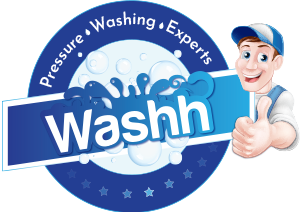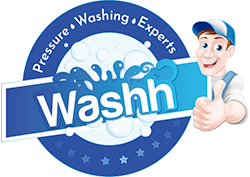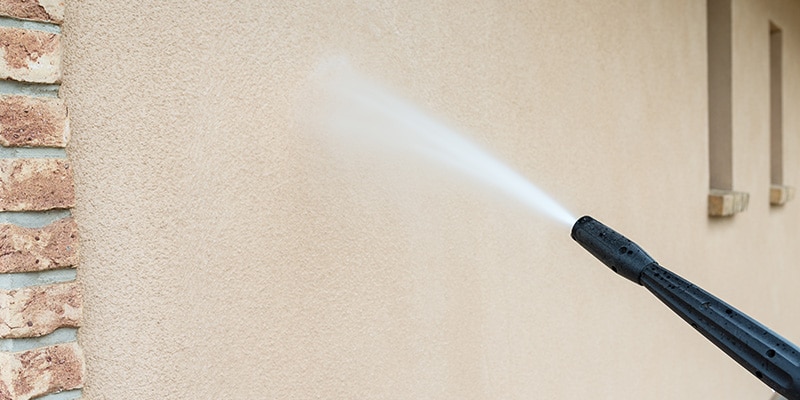An important part of house cleaning is knowing how to clean different kinds of materials to avoid damaging them. Stucco, in particular, requires careful cleaning. Learn the ins and outs of how to clean stucco below.
How to Clean Stucco the Right Way
In terms of building materials, stucco remains a popular choice among many property owners today. Stucco can improve the exterior appearance of any property while simultaneously acting as an insulator. It is also eco-friendly, consisting of limestone, concrete, and sand.
Due to its textured surface, though, stucco can accumulate large amounts of dirt, grime, mold, and algae. Over time, these pollutants can not only age the appearance of a property, but they can also cause long-term damage. Thus, you must pay attention to your stucco surface and clean it properly. Ideally, stucco surfaces should be cleaned two to three times a year.
How do you clean exterior stucco? Here is your step-by-step guide on how to clean stucco exterior:
Step 1: Inspect the Stucco Surface
The first thing you must do is to check the stucco surface for any signs of damage. Look for cracks, gaps, or any other openings.
Washing without inspecting the stucco surface first might cause water to enter through the cracks. When this happens, mold and mildew can start to grow. As many know, mold and mildew thrive on moisture. In some cases, this can even lead to water damage within your walls.
Step 2: Seal Any Cracks
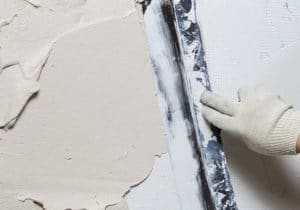
To repair minor damages, use an exterior acrylic caulk that closely matches the color of your stucco surface. Most major home improvement retailers and local stores have this. Apply the caulk to the cracked or chipped area to cover it.
You can then use sand or any other gritty material to mimic the texture of the stucco surface. Make sure to press the gritty material onto the caulk while it is still wet. Allow the caulk to dry before proceeding with cleaning stucco.
If the damage is extreme, it is best to call a professional for help.
Step 3: Rinse
After carefully inspecting the stucco surface and repairing any cracks, it is time to clean the stucco surface. You will need to rinse down the surface with water first. This will clean off any loose dirt, dust, and debris. You can use a regular garden hose with an attachment to do this, but you can also use a pressure washer.
To pressure wash stucco, make sure to use a pressure level of 1,500 PSI or below and a 25- or 40-degree nozzle. Stucco surfaces are porous and delicate, so too high a pressure can damage them. There should be at least 24 inches between the nozzle and the stucco surface. To avoid damage, rinse the surface in an even stream at a 45-degree angle.
Step 4: Apply the Cleaning Solution
Learning how to clean stucco stains means knowing which cleaning solution to use. You can use a mixture of liquid dish soap and water to remove stains. If there is mold or mildew growth, you will need to use something stronger like bleach and water. For the former, use a combination of equal parts of bleach and water.
Alternatively, you can also use a mixture of bleach and a concentrated stucco cleaner. You can buy this type of cleaner at any home improvement store. Make sure to carefully follow the instructions written on the label.
Typically, though, you will need to mix the cleaner with either bleach or hot water. Bleach helps eliminate mildew and algae. When dealing with bleach, always wear rubber gloves and goggles.
If you would rather not use bleach, you can opt for a solution of dish soap and Borax instead. Borax works effectively on mold and is less toxic than bleach.
To make this cleaning solution, mix 2 gallons of warm water, 1/2 cup of Borax, and 2 tablespoons of liquid dish soap.
Once you have your cleaning solution, it is time to apply it. For stucco pressure washing, apply the solution at a downward angle using a 65-degree nozzle tip. Maintain 18 to 24 inches between the nozzle tip and the stucco surface.
After applying the solution, let it sit for about 5 to 10 minutes. Make sure the solution does not dry or else you will have a harder time rinsing it off. You can keep it moist by lightly spraying it with water once in a while.
Step 5: Scrub
Stubborn stains will need a little extra TLC in the form of a brush to completely remove. Make sure to go with a soft-bristle brush to scrub the stains away either by hand or with the help of a rotating brush attachment. Scrub the stains in sections while maintaining a gentle yet, at the same time, firm pressure.
Step 6: Rinse Again
The final step is to rinse down the stucco surface again with water. This will clean off the solution and, when done properly, all the pollutants with it, too.
Use the pressure washer to rinse the surface, working your way from the top to the bottom. You can use a 25- or 40-degree nozzle tip for this. If you opt for the 25-degree tip, make sure to keep 24 inches from the surface to avoid inflicting any damages to it.
Although you can take the DIY route with stucco cleaning, it is always better to seek professional help. Professionals know how to clean stucco with pressure washing without damaging it.
Stucco Cleaning FAQs
Q: Can you power wash stucco?
Yes, you can use a power washer or pressure washer to clean stucco. Just make sure to maintain a good distance between the nozzle and the surface, use the 1,500 PSI, and a 25- or 40-degree nozzle. Although, given the intensity of a power washer, seeking the help of a professional is always best.
Q: How do you remove mildew from stucco?
You can remove mildew from stucco using a mixture of equal parts water and bleach. You can also mix bleach with a concentrated cleaner or use a combination of Borax, dish soap, and warm water.
Q: Can you use vinegar on stucco?
Cleaning stucco with vinegar can get rid of efflorescence. For mildew or algae growth, it is better to use a bleach solution on stucco surfaces.
Q: What causes black stains on stucco?
If you see black stains on your stucco surface, it is likely the result of a certain type of algae growth. You can remove this type of stain using a combination of dish soap and water.
Q: Can I use bleach on stucco?
Yes, you can use bleach to clean your stucco surface. To clean stucco, mix equal parts bleach and water. Apply the mixture to the surface and allow it to sit for a few minutes before rinsing it down with clean water.
Q: What is the best stucco cleaner?
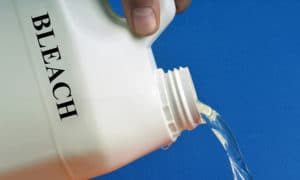
To clean stucco, you can use a bleach and water solution or bleach and concentrated cleaner solution. You can also use Borax mixed with warm water and dish soap.
Q: Can you use CLR on stucco?
Calcium Lime Rust, or CLR, can be used to clean unpainted stucco. You should not use CLR on painted stucco, though, because it will cause the paint to fade or crack.
Q: How do you clean green algae off stucco?
To clean green algae off stucco, you can use a combination of water and dish soap as a cleaning solution. You may need to scrub the stain with a soft-bristle brush before rinsing it with water.
The Best Way to Clean Stucco
Property owners like you must know how to clean stucco effectively and properly. With this knowledge, you can maintain the appearance of your stucco surface and extend its life cycle by minimizing the damages caused by pollutants.
Pressure washing stucco remains one of the most effective ways to clean stucco, but it is best left in the hands of professionals. Call Washh today at 704.321.8000 or contact us online for expert pressure washing services.
RELATED ARTICLES:
- Why Is Apartment Breezeway Pressure Washing Beneficial?
- How Professional Rust Removal For Houses Can Benefit You
- Why Roof Pressure Washing Is Good For Your Roof
